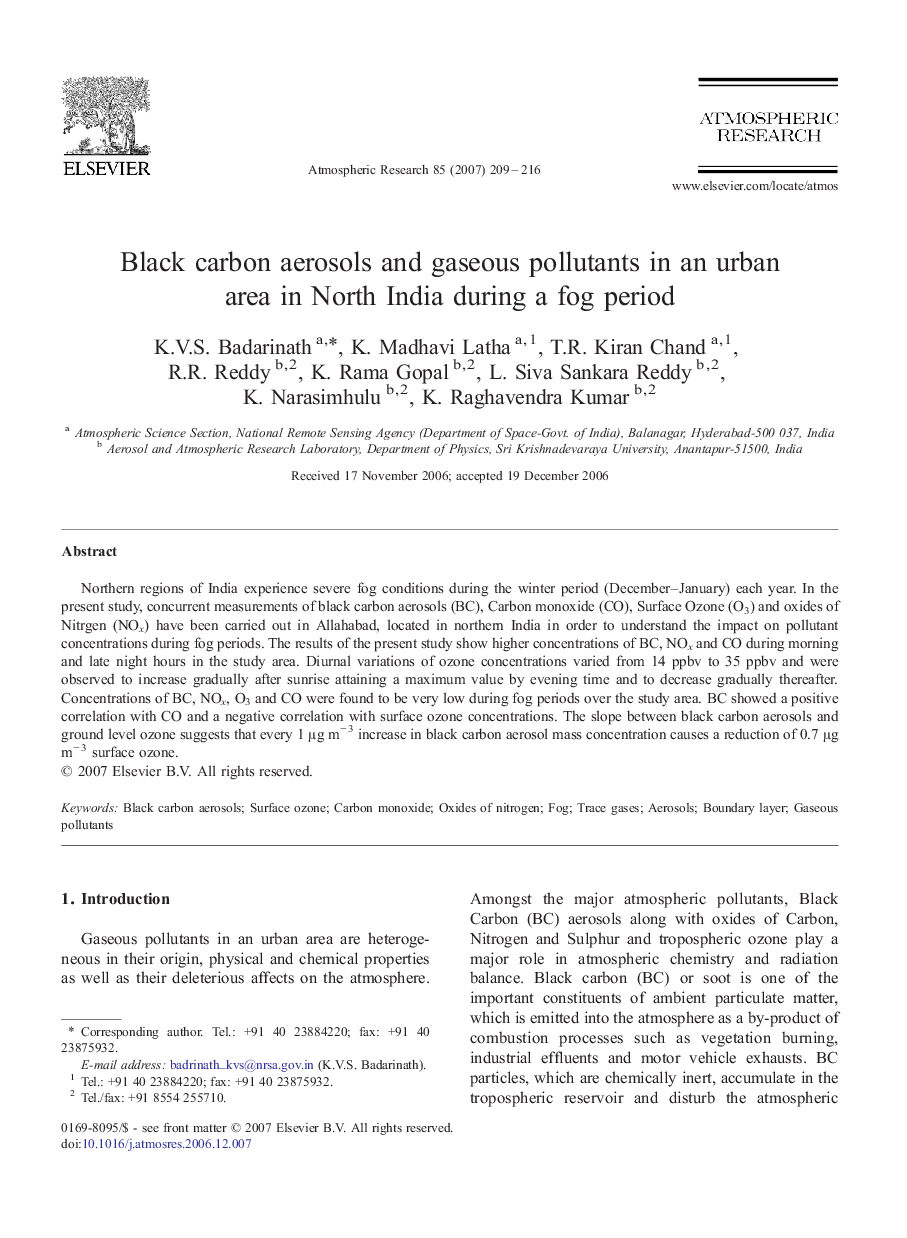| Article ID | Journal | Published Year | Pages | File Type |
|---|---|---|---|---|
| 4451163 | Atmospheric Research | 2007 | 8 Pages |
Abstract
Northern regions of India experience severe fog conditions during the winter period (December-January) each year. In the present study, concurrent measurements of black carbon aerosols (BC), Carbon monoxide (CO), Surface Ozone (O3) and oxides of Nitrgen (NOx) have been carried out in Allahabad, located in northern India in order to understand the impact on pollutant concentrations during fog periods. The results of the present study show higher concentrations of BC, NOx and CO during morning and late night hours in the study area. Diurnal variations of ozone concentrations varied from 14 ppbv to 35 ppbv and were observed to increase gradually after sunrise attaining a maximum value by evening time and to decrease gradually thereafter. Concentrations of BC, NOx, O3 and CO were found to be very low during fog periods over the study area. BC showed a positive correlation with CO and a negative correlation with surface ozone concentrations. The slope between black carbon aerosols and ground level ozone suggests that every 1 μg mâ 3 increase in black carbon aerosol mass concentration causes a reduction of 0.7 μg mâ 3 surface ozone.
Keywords
Related Topics
Physical Sciences and Engineering
Earth and Planetary Sciences
Atmospheric Science
Authors
K.V.S. Badarinath, K. Madhavi Latha, T.R. Kiran Chand, R.R. Reddy, K. Rama Gopal, L. Siva Sankara Reddy, K. Narasimhulu, K. Raghavendra Kumar,
